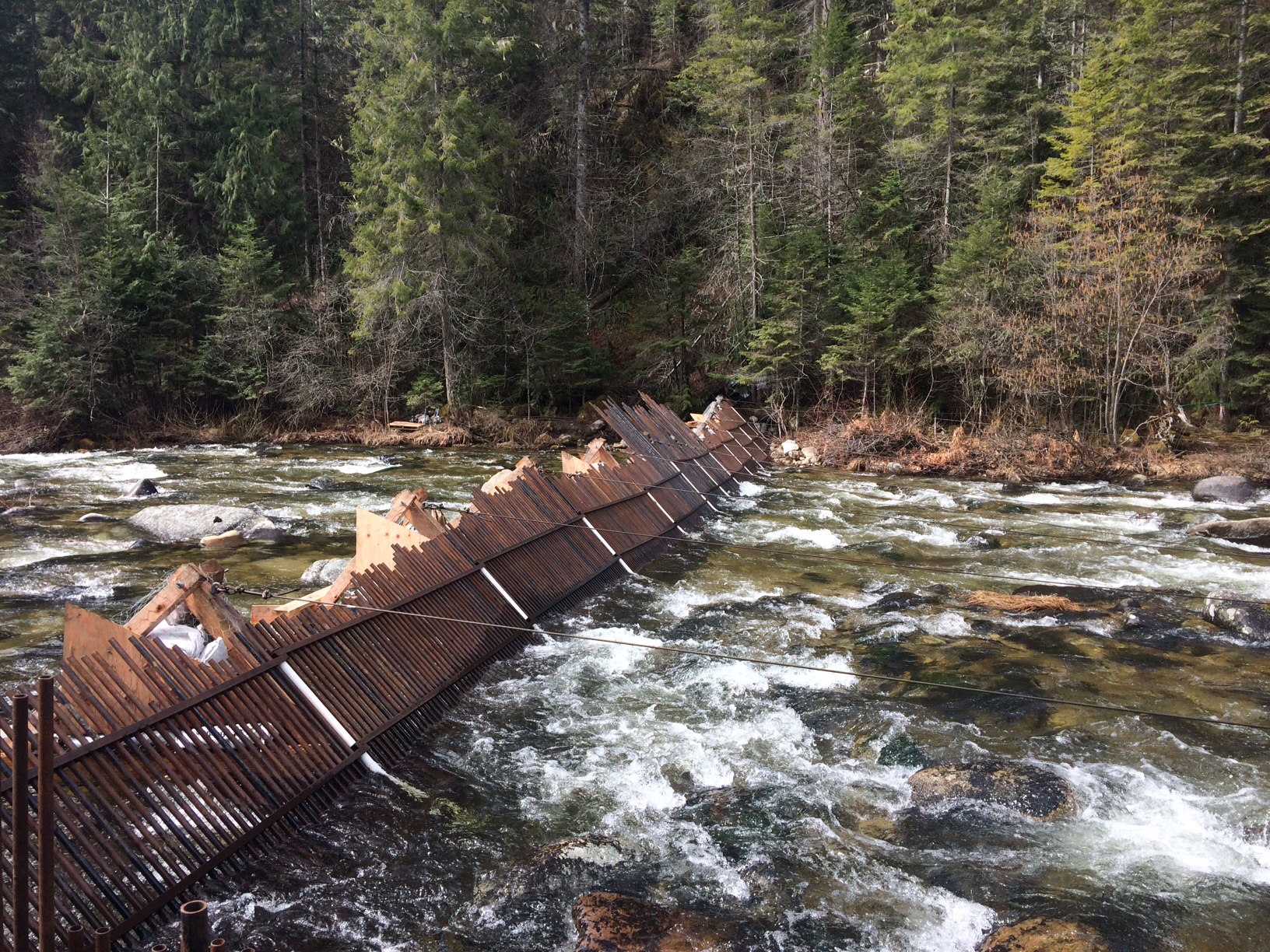Fishing weirs are structures historically used by Native Americans and other hunter-gatherer societies to catch fish in streams, lagoons, and other water bodies. An entry from Lewis and Clark’s journals from 1805 described a fence-like structure built by the Shoshone tribe on the Lemhi River in Idaho.

Fishing weirs have now been widely used in streams across the world as a tool for biologists to study fish and many still look similar to historical structures. The Idaho Department of Fish and Game (IDFG) operates several temporary weirs on some Idaho rivers as well as permanent weirs built at hatchery facilities to monitor Chinook Salmon and steelhead. Pictured below is a weir that IDFG annually constructs across Fish Creek, a tributary to the Lochsa River. The weir directs fish into a trap enclosure where they can be netted out and sampled before being released to continue their journey upstream to spawn.
In being able to capture some of these steelhead, we can estimate how many total fish made it to Fish Creek to spawn. We also take a few scales from each adult to age and have found that most females that make it back to Fish Creek spend at least two years in the ocean but males vary more between spending one or two years in the ocean. 
These are generally your bigger than average steelhead regardless of the amount of time they spend in the ocean because they are B-run fish. We will visit the A-run and B-run terminology in another blog so stay tuned. Monitoring this important population is crucial to understanding how these fish are doing in relation to ocean conditions, river travel, and other factors. During these times of low returns and uncertainty, we are able to learn from the past and we know that this particular population has gone through its ups and downs multiple times. So far this year, we have trapped ten adults at the weir which is already a little higher than last year. We hope this trend continues through the rest of the trapping season this year and in years to come.

